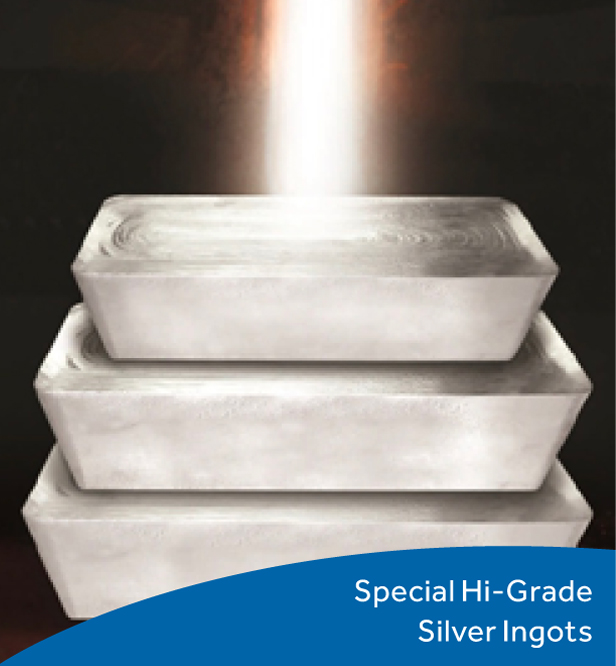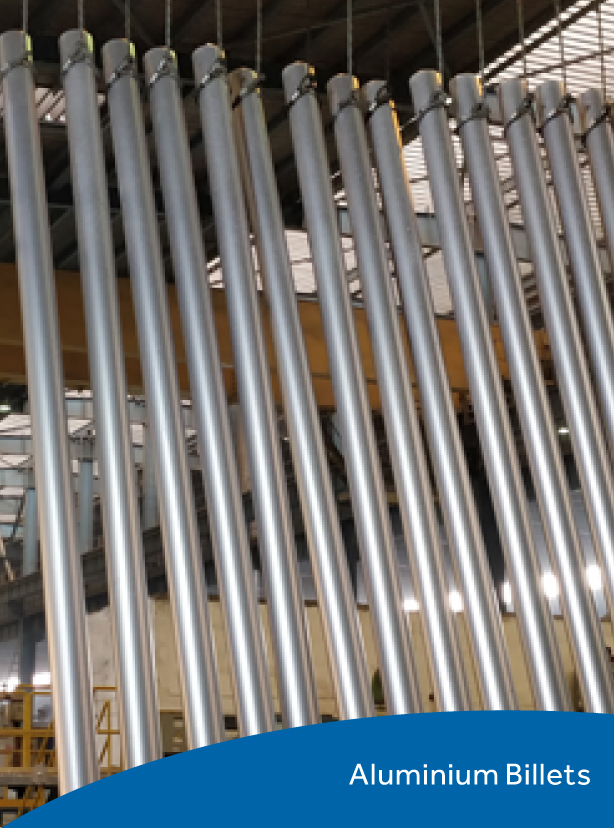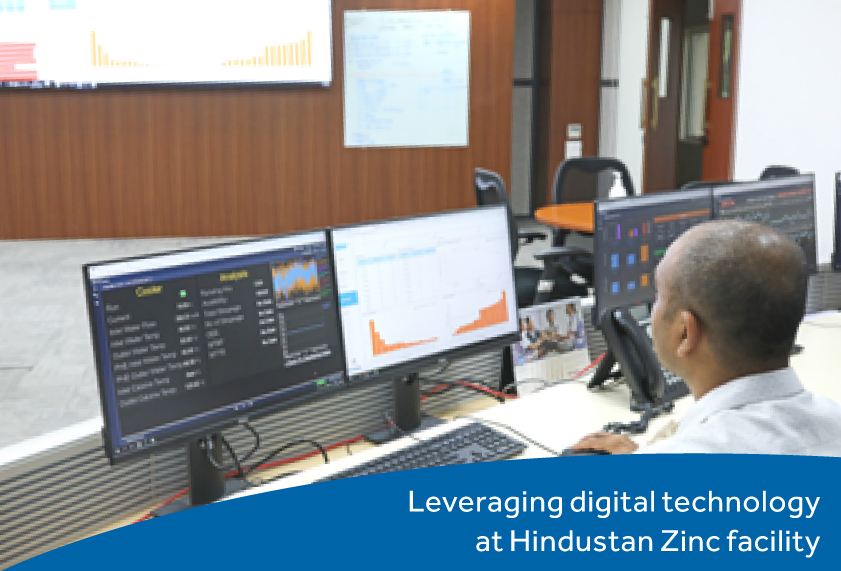
Electro Plating Grade (EPG) products
A successful HZL story
One such successful project is Continuous Galvanising Grade (CGG), a zinc-aluminium alloy that was co-developed with leading domestic steel manufacturers. The benefits of this value-added product comprise significantly low energy costs and better coating finish owing to the use of aluminium.

Another value-added product is Hindustan Zinc Die-cast Alloy (HZDA), which is now being used by the domestic auto components manufacturing industry. HZL offers two variants (HZDA-3 and HZDA-5) of the product to cater to the needs of alloy makers. Earlier, Die-cast alloys were imported, hence this make-in-India initiative will lead to foreign exchange savings for the country. Its wide availability is another big advantage for auto components manufacturing companies.
Yet another success story for HZL is Electro Plating Grade (EPG) products. The Company has set up a digital shop to quickly address the requirements of various customers seamlessly. Indian Micro Small and Medium Industries (MSMEs) can easily have access to the products from the Company’s warehouses, with real-time prices benchmarked to the London Metal Exchange (LME). The Company’s future plan is to develop zinc dust, which will cater to the requirements of the paints, pharma and fertiliser industries.
Possibilities on the horizon
Partnering for self-reliance
Aligned with the mission for a selfreliant India, HZL envisages several opportunities in the near and long term and is already capitalising on many of them. HZL is now partnering with leading Indian corporates for Aatmanirbhar Bharat. The partnership with Tata Steel is a remarkable step in this direction. Tata Steel made an exception to their Two-Supplier policy by giving 100% of their annual requirement to HZL last year. HZL is providing vendor managed inventory services to Tata Steel’s plants to help them rationalise their costs.
Collaborating with academia
HZL is also partnering with IIT Bombay for Continuous Galvanized Rebar (CGR) benefits. IIT Bombay has published a paper that demonstrates the benefits of CGR vs epoxy-coated vs non-galvanized rebars, along with cost implications. The life of all coastal infrastructure can increase manifold at an almost equal cost compared to other options for EPC contractors.
Capitalising on strong tailwinds
Given the gradual migration from fossil fuel to renewables throughout the world, major investments in battery technology involving zinc are expected to come to India. This indicates that the horizon of opportunities for HZL is growing. The Company is fully equipped to take advantage of these tailwinds to grow its business and partner a self-reliant India.
INDIGENOUS CAPABILITIES FOR AN IMPORT-DEPENDENT INDUSTRY
India’s auto sector consumes about 4% aluminium, vis-à-vis 11% in the US and 14% in Europe, indicating a huge growth headroom. The country’s foundry market for automotive components is small (only 10% of the total foundry market) compared to that of the US. With increasing focus on higher performance with better safety and lower emission, this gap is going to shrink progressively.
We, at Vedanta, have tapped into the opportunity are developing indigenous capabilities to meet aluminium’s growing demand. Our Aluminium business was the first in India to supply Primary Foundry Alloys (PFA) to the import-dependent domestic auto sector for the manufacture of alloy wheels.
PFA’s domestic market was ~250 kt in FY2020, of which 65 kt was being imported as wheels from China and other duty-free nations and ~20 kt was being supplied from BALCO. In FY2020, 160 kt PFA was imported into India, which later reduced to 98 kt in FY2021 following the capacity ramp-up in BALCO’s foundry alloy line.
Our aluminium smelters across Odisha and Chhattisgarh have advanced technology-enabled cast houses. Best-in-class engineering technologies, intelligent automation, smart solutions, environmental safeguards and sustainability-focused operating procedures are integrated to create lasting value. Equipped with in-line metal treatment facilities consisting of degassing and metal filtration unit and continuous casting technology, this ensures that our customers get the best-in-quality PFA.
A HAWK-EYED FOCUS ON QUALITY
Our foundry alloy ingots exceed the most stringent quality requirements such as the standards set by the International Automotive Task Force (IATF). We have received IATF-16949 certification, one of the most widely used international standards trusted by leading global automakers. We are now India’s only TS-16949 and IATF-16949 accredited primary smelter. Our Centre of Quality Excellence, stringent quality assessment of raw materials and finished products have made us one of the most preferred aluminium suppliers to developed markets. Our Customer Technical Services (CTS) team has become more advanced and intuitive in ensuring complete customer fulfilment. With state-of-the-art infrastructure, engineering prowess, global technology partnerships and R&D capability to develop solutions, Vedanta is poised to bring fundamental change in India’s automotive and auto-ancillary markets to help build the future of mobility.
A NATURAL GROWTH PARTNER FOR INDIA’S AUTOMOTIVE SECTOR
Expanding our foundry alloy product line, we have recently launched the Aluminium Cylinder Head Alloy. This alloy was entirely being imported into India (25 kt in FY2021). The Cylinder Head Alloy leverages material design to help automakers increase efficiency of internal combustion engines for improved performance on emission control, in line with BS-VI and CAFE (Corporate Average Fuel Efficiency/ Economy) norms.
The first Indian emission regulations were idle emission limits, which have become more stringent over time following the implementation of Bharat Standards, the latest of which is BS-VI, implemented on 1 April 2020. With tighter norms and compliance to control emission of sulphur oxide, nitrogen oxide and carbon dioxide, automakers are looking for fundamental solutions such as improving the efficiency of internal combustion engines. This is where Vedanta’s Aluminium Cylinder Head Alloy is helping automakers adhere to emission norms.
India’s auto component sector is among the fastest growing but lags in contribution to manufacturing turnover. The country’s auto component industry’s aspirations of having a significant share of the global trade, calls for a renewed focus on localisation on every business front, particularly with respect to sourcing raw materials. As India’s leading producer of a vast array of globally acclaimed metals and value-added products, Vedanta is a natural partner for the automotive and auto ancillary industry, across their entire value chain, from large players to MSMEs for the nation’s growth.

Traditional businesses, which were largely looked upon as brick-and-mortar companies, were slow to transform. However, they are recognising the need for faster digitalisation to expedite integration across divisions and verticals, stepping up efficiency, and reaching out to more customers and stakeholders. Besides, digitalisation has not only improved business gains, but has also enhanced safety standards. At Vedanta, we are relentlessly building on our digital backbone across all our businesses as an investment for the future.
3D VISUALISATION TO REDUCE RAMP JAM
With the extensive use of 3D visualisation module of OptiMine to track machines in the Rampura Agucha underground mine, we have achieved significant improvement (9-10%) in the reduction of ramp jams from November 2020 to March 2021. The control room has played a major role in tracking daily operations and critical processes to reduce ramp jams, increasing efficiency and improving average response time to clear the jams.
HAULING CYCLE TIME REDUCTION IN RA UNDERGROUND MINE
The digitalisation of the underground mine through our WiFi network has been completed at Rampura Agucha mine and the control room setup is fully operational. Traffic awareness is being utilised now for the main decline section spanning 12 km. Traffic congestion and real-time equipment tracking are being utilised to drive operational efficiency. Mobilaris and Eurovac are our key partners in our ongoing digitalisation programme at RAUG.
Low Profile Dump Truck (LPDT) cycle time has reduced by 9-10% with improved visibility and real-time decision-making from control room to equipment.
SOFT SENSOR FOR ANALYSIS AND PREDICTION FOR REAL TIME P80
A soft sensor for P80 was built by modelling the grinding process in Rampura Stream, using the historical process parameter data from Pi. The model has 97% accuracy, which helps optimise the consumable usage of grinding media and process water addition. The model ensures a consistent P80 to the downstream floatation circuit, which will help the operations team to reduce concentrate grade fluctuation. As the model acts as a soft sensor for Particle Size Analyzer (PSI), the procurement and the operating costs of PSI are reduced. The model helps prevent over- or undergrinding by effective P80 tracking.

Traditional businesses are recognising the need for faster digitalisation to expedite integration across divisions and verticals, stepping up efficiency, and reaching out to more customers and stakeholders
EXPLORATION AND NEW FIELD DEVELOPMENT
Leading to the reduction in time-to-first oil by moving to cloud-based data management and high-performance computing such as seismic data and processing on cloud, log splicing tool, and so on.
DECLINE & RESERVOIR MANAGEMENT
To manage production-related challenges to the ageing fields, we are using traditional first principle-based approaches augmented by new-age data driven techniques in Artificial Intelligence and Machine Learning (AI/ML) such as water flood optimisation in Aishwarya Upper Fatehgarh and polymer optimisation in Mangala fields, well reservoir management job planning and tracking, and so on.
SURFACE AND SUB-SURFACE OPERATIONS
We are focused on reducing unwanted production losses and driving digital-led efficient work processes through programmes such as digital oilfield. Disha – smart interactive reporting and dashboards, model predictive control-based artificial lift system optimisation, satellite fields IoT-based connectivity, production reporting, and others are part of this drive.
ASSET INTEGRITY AND RELIABILITY
Improvement programmes are
driven to have best-in-class
equipment availability. The culture
is shifting from reactive to proactive
maintenance through the adoption
of predictive analytics-based apps,
asset performance management,
drone-based transmission line
inspections, control room, field
logbooks,
among others.
HEALTH, SAFETY AND ENVIRONMENT
HSE practices are supported by
digitalisation, leading to Vedanta’s
vision of zero harm, zero discharge
and zero waste. For example, HSE
dashboards, contact tracing mobile
app, visible felt leadership app,
incident learning app,
and so on.
BUSINESS PROCESS IMPROVEMENTS
Digitally enabled supporting functions in the organisation are expected to become more efficient and productive such as HR, procurement, supply chain & logistics, finance, and so on. These functions use technologies such as upgraded ERP platform, BOTS, RPA (Robotic Process Automation), video analytics, and so on.
Digitally optimised artificial lift system
Artificial lift systems are complex pumping systems that drive oil from sub-surface to surface. Digital systems such as advanced process control or model predictive control maximises production without violating any of the surface, sub-surface, well or pump constraints. Additionally, customised artificial lift surveillance digital system helps avoid avoidable trips and shutdowns, thus leading to higher runtime resulting in enhanced production. Moreover, it helps engineers take prudent decisions that improve the run-life of these critical equipment.